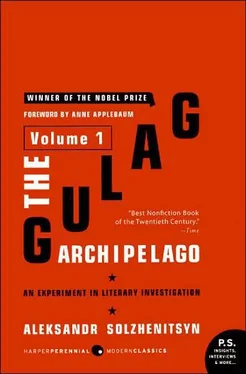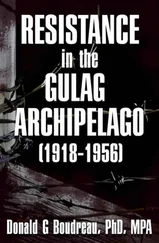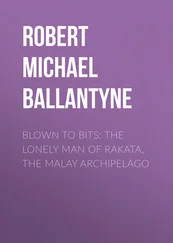It is not possible for us at this time fully to investigate exactly who fell within the broad definition of insects’, the population of Russia was too heterogeneous and encompassed small, special groups, entirely superfluous and, today, forgotten. The people in the local zemstvo self-governing bodies in the provinces were, of course, insects. People in the cooperative movement were also insects, as were all owners of their own homes. There were not a few insects among the teachers in the gymnasiums. The church parish councils were made up almost exclusively of insects, and it was insects, of course, who sang in church choirs. All priests were insects—and monks and nuns even more so. And all those Tolstoyans who, when they undertook to serve the Soviet government on, for example, the railroads, refused to sign the required oath to defend the Soviet government with gun in hand thereby showed themselves to be insects too. (We will later see some of them on trial.) The railroads were particularly important, for there were indeed many insects hidden beneath railroad uniforms, and they had to be rooted out and some of them slapped down. And telegraphers, for some reason, were, for the most part, inveterate insects who had no sympathy for the Soviets. Nor could you say a good word about Vikzhel, the All-Russian Executive Committee of the Union of Railroad Workers, nor about the other trade unions, which were often filled with insects hostile to the working class.
Just those groups we have so far enumerated represent an enormous number of people—several years’ worth of purge activity.
In addition, how many kinds of cursed intellectuals there were—restless students and a variety of eccentrics, truth-seekers, and holy fools, of whom even Peter the Great had tried in vain to purge Russia and who are always a hindrance to a well-ordered, strict regime.
It would have been impossible to carry out this hygienic purging, especially under wartime conditions, if they had had to follow outdated legal processes and normal judicial procedures. And so an entirely new form was adopted: extrajudicial reprisal, and this thankless job was self-sacrificingly assumed by the Cheka, the Sentinel of the Revolution, which was the only punitive organ in human history that combined in one set of hands investigation, arrest, interrogation, prosecution, trial, and execution of the verdict.
In 1918, in order to speed up the cultural victory of the Revolution as well, they began to ransack the churches and throw out the relics of saints, and to carry off church plate. Popular disorders broke out in defense of the plundered churches and monasteries. Here and there the alarm bells rang out, and the true Orthodox believers rushed forth, some of them with clubs. Naturally, some had to be expended right on the spot and others arrested.
In considering now the period from 1918 to 1920, we are in difficulties: Should we classify among the prison waves all those who were done in before they even got to prison cells? And in what classification should we put those whom the Committees of the Poor took behind the wing of the village soviet or to the rear of the courtyard, and finished off right there? Did the participants in the clusters of plots uncovered in every province (two in Ryazan; one in Kostroma, Vyshni Volochek, and Velizh; several in Kiev; several in Moscow; one in Saratov, Chernigov, Astrakhan, Seliger, Smolensk, Bobruisk, the Tambov Cavalry, Chembar, Velikiye Luki, Mstislavl, etc.) at least succeed in setting foot on the land of the Archipelago, or did they not—and are they therefore not related to the subject of our investigations? Bypassing the repression of the now famous rebellions (Yaroslavl, Murom, Rybinsk, Arzamas), we know of certain events only by their names—for instance, the Kolpino executions of June, 1918. What were they? Who were they? And where should they be classified?
There is also no little difficulty in deciding whether we should classify among the prison waves or on the balance sheets of the Civil War those tens of thousands of hostages, i.e., people not personally accused of anything, those peaceful citizens not even listed by name, who were taken off and destroyed simply to terrorize or wreak vengeance on a military enemy or a rebellious population. After August 30, 1918, the NKVD ordered the localities “to arrest immediately all Right Socialist Revolutionaries and to take a significant number of hostages from the bourgeoisie and military officers.” 6(This was just as if, for example, after the attempt of Aleksandr Ulyanov’s group to assassinate the Tsar, not only its members but all the students in Russia and a significant number of zemstvo officials had been arrested.) By a decree of the Defense Council of February 15, 1919—apparently with Lenin in the chair—the Cheka and the NKVD were ordered to take hostage peasants from those localities where the removal of snow from railroad tracks “was not proceeding satisfactorily,” and “if the snow removal did not take place they were to be shot.” [11] 7. Dekrety Sovetskoi Vlasti ( Decrees of the Soviet Regime ), Vol. 4, Moscow, 1968, p. 627.
(At the end of 1920, by decree of the Council of People’s Commissars, permission was given to take Social Democrats as hostages too.)
But even restricting ourselves to ordinary arrests, we can note that by the spring of 1918 a torrent of socialist traitors had already begun that was to continue without slackening for many years. All these parties—the SR’s, the Mensheviks, the Anarchists, the Popular Socialists—had for decades only pretended to be revolutionaries; they had worn socialism only as a mask, and for that they went to hard labor, still pretending. Only during the violent course of the Revolution was the bourgeois essence of these socialist traitors discovered. What could be more natural than to begin arresting them! Soon after the outlawing of the Cadets, the dispersal of the Constituent Assembly, the disarming of the Preobrazhensky and other regiments, they began in a small way to arrest, quietly at first, both SR’s and Mensheviks. After June 14, 1918, the day members of these parties were excluded from all the Soviets, the arrests proceeded in a more intensive and more coordinated fashion. From July 6 on, they began to deal with the Left SR’s in the same way, though the Left SR’s had been cleverer and had gone on pretending longer that they were allies of the one and only consistent party of the proletariat. From then on, it was enough for a workers’ protest, a disturbance, a strike, to occur at any factory or in any little town (and there were many of them in the summer of 1918; and in March, 1921, they shook Petrograd, Moscow, and then Kronstadt and forced the inauguration of the NEP), and—coinciding with concessions, assurances, and the satisfaction for the just demands of the workers—the Cheka began silently to pick up Mensheviks and SR’s at night as being the people truly to blame for these disorders. In the summer of 1918 and in April and October of 1919, they jailed Anarchists right and left. In 1919 they arrested all the members of the SR Central Committee they could catch—and kept them imprisoned in the Butyrki up to the time of their trial in 1922. In that same year, Latsis, a leading Chekist, wrote of the Mensheviks: “People of this sort are more than a mere hindrance to us. That is why we remove them from our path, so they won’t get under our feet…. We put them away in a secluded, cozy place, in the Butyrki, and we are going to keep them there until the struggle between capital and labor comes to an end.” [12] 8. M. I. Latsis, Dva Goda Borby na Vnutrennom Fronte; Populyarni Obzor Deyatelnosti ChK (Two Years of Struggle on the Home Front; Popular Review of the Activity of the Cheka), Moscow, GIZ, 1920, p. 61.
In 1919, also, the delegates to the Non-Party Workers Congress were arrested; as a result, the Congress never took place. [13] 9. Ibid., p. 60.
Читать дальше












